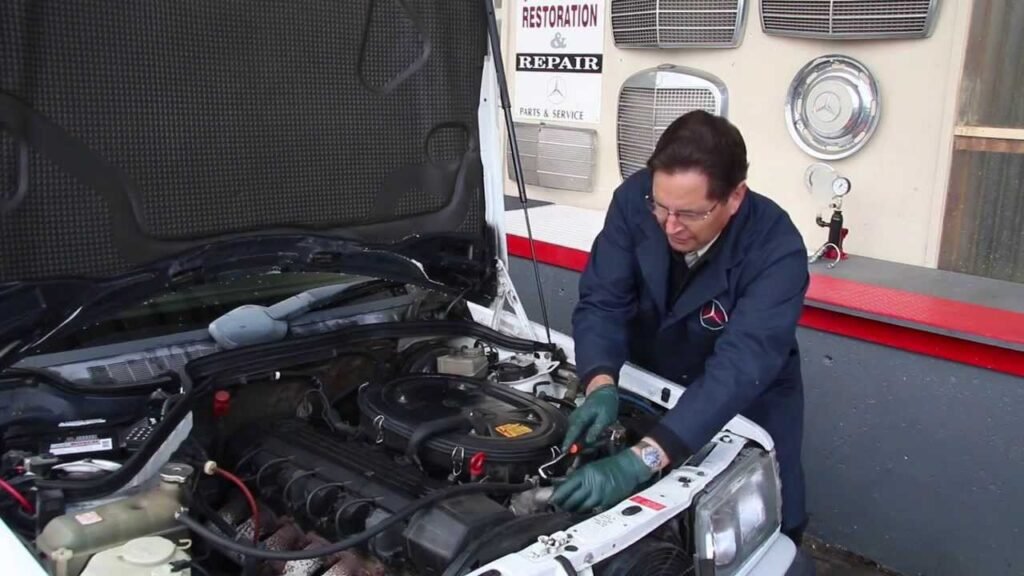Do you know how to inspect your timing belt? I have talked before about the importance of regular automotive maintenance. Inspecting your timing belt may be one of the simplest and most important steps in regular auto maintenance. Simple and important do not usually seem to go hand in hand, but this time it is true. Your timing belt is responsible for a lot! Your timing belt is the leader of the band. Without the leader, the band falls apart. If the leader goes out of whack, the rest of the band will follow and the whole song comes apart. This is how your motor operates too. The timing belt is responsible for keeping everything running in perfect time. If the timing belt isn’t working properly, it can result in other parts malfunctioning and eventually lead to necessary auto repairs that may have been able to be avoided.
How Often Should I Inspect the Timing Belt?
Due to its importance, your timing belt needs to be checked regularly. Your auto manufacturer has a suggested timing belt replacement time, but you should still inspect it at around every 10,000 miles. Always follow the guidelines on replacing your timing belt too, even if it doesn’t look too bad visually.
Where is the Timing Belt?
The timing belt is usually pretty easy to access for inspection. You may have to use a phillips screwdriver for this too. In most cases your timing belt is easily found by removing a plastic timing belt cover that will be located on the front of the engine. The cover is often secured using clips, but some are screwed down and will have to be unscrewed to gain access.
Mechanic Tip:
If you do have to remove screws or clips, make sure you put them in a safe place. You really don’t want to drop them and add all the time it may take to find them again. This goes for any auto repair – losing tiny clips or screws can add a great deal of time to an otherwise quick inspection or simple auto repair.
How Do I Inspect my Timing Belt?
Once you have removed the cover, you will want to check the timing belt for cracks. Tiny little cracks can form that will continue to get worse with time. If you find a couple, like one or two, small cracks in the outer coating, you’re okay. If you discover there are lots of cracks though, this is a sign of extreme wear. Now you want to take a look at the other side of the belt. Slightly turn the belt over so you can see the teeth. You will want to inspect each tooth, because even one damaged section can cause massive trouble. If you’re still looking good at this point, you will also want to check for excess play in the belt. You do this by twisting the belt. If it turns more than halfway around, you are looking at a little too much free play with the timing belt. Your auto’s manual gives the specifics for your particular auto, but the twist past halfway is a great rule of thumb to go by.
When Should I Replace my Timing Belt?
Like I mentioned before, timing belt problems can lead to other auto repairs. You should ALWAYS replace the timing belt according to the manufacturer’s specifications even if it appears to be okay. And if you find excessive tiny cracks on the smooth side, broken or damaged teeth on the flip side, or an excessive amount of play in the belt, it is time to replace it. When you find a problem, the time to replace it is now. Like most auto repairs, if left unfixed, it can and likely will lead to bigger, more complicated auto issues requiring bigger, more expensive auto repairs. If the timing belt should break or begin to shred, you may find yourself facing some hefty auto repair bills.
If you believe you are having trouble with your timing and you’d like a trusted, professional mechanic to take a look for you, just bring your auto to us. Sanford’s Automotive Service has been serving the greater Columbia, SC metro area for nearly 30 years. Drop in today or call to schedule your auto repair or vehicle maintenance now. At Sanford’s, an ASE Certified mechanic will find you problem and get it fixed right the first time!

